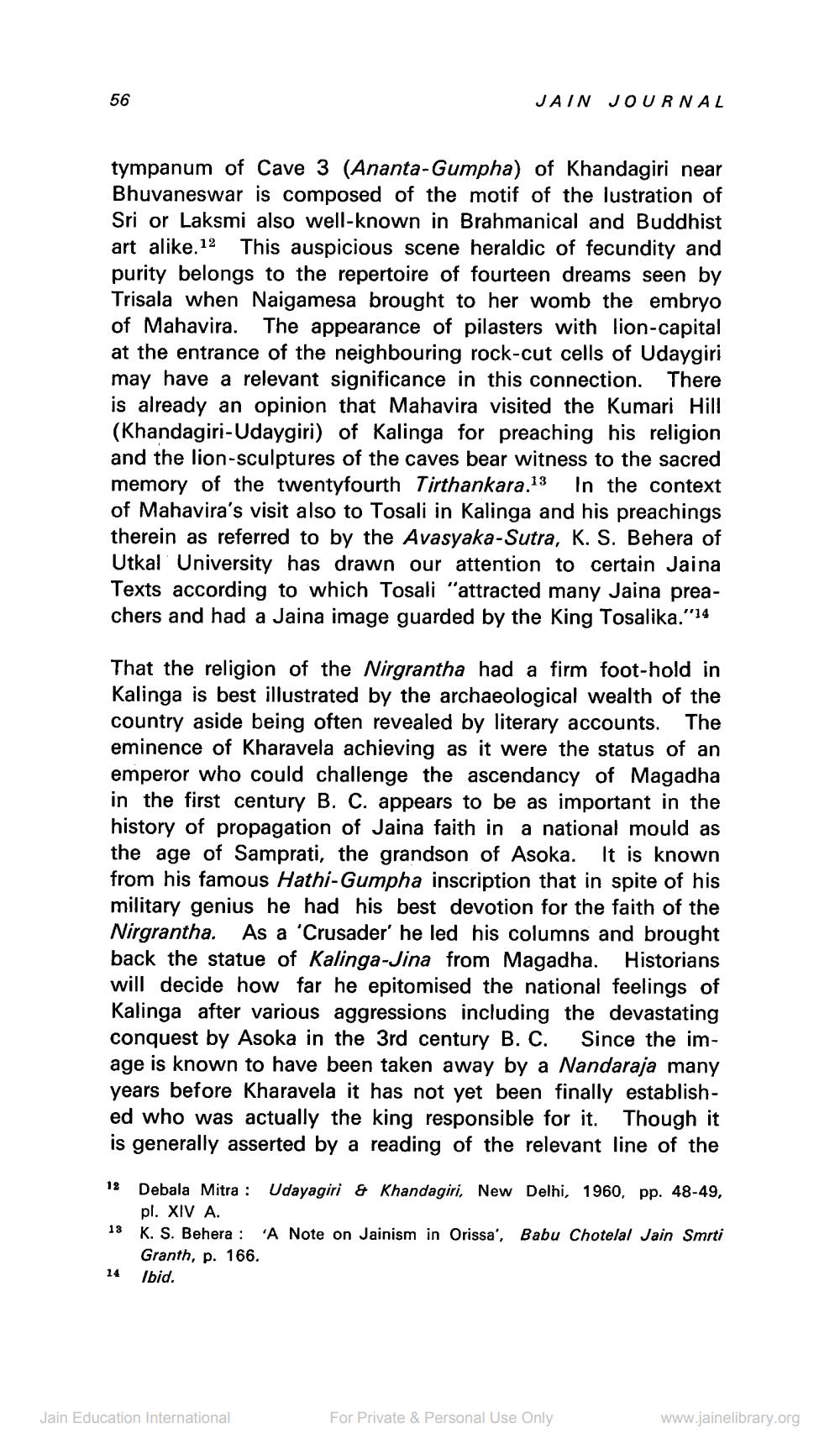Book Title: Jain Journal 1974 10 Author(s): Jain Bhawan Publication Publisher: Jain Bhawan Publication View full book textPage 8
________________ 56 tympanum of Cave 3 (Ananta-Gumpha) of Khandagiri near Bhuvaneswar is composed of the motif of the lustration of Sri or Laksmi also well-known in Brahmanical and Buddhist art alike. 12 This auspicious scene heraldic of fecundity and purity belongs to the repertoire of fourteen dreams seen by Trisala when Naigamesa brought to her womb the embryo of Mahavira. The appearance of pilasters with lion-capital at the entrance of the neighbouring rock-cut cells of Udaygiri may have a relevant significance in this connection. There is already an opinion that Mahavira visited the Kumari Hill (Khandagiri-Udaygiri) of Kalinga for preaching his religion and the lion-sculptures of the caves bear witness to the sacred memory of the twentyfourth Tirthankara.13 In the context of Mahavira's visit also to Tosali in Kalinga and his preachings therein as referred to by the Avasyaka-Sutra, K. S. Behera of Utkal University has drawn our attention to certain Jaina Texts according to which Tosali "attracted many Jaina preachers and had a Jaina image guarded by the King Tosalika."14 That the religion of the Nirgrantha had a firm foot-hold in Kalinga is best illustrated by the archaeological wealth of the country aside being often revealed by literary accounts. The eminence of Kharavela achieving as it were the status of an emperor who could challenge the ascendancy of Magadha in the first century B. C. appears to be as important in the history of propagation of Jaina faith in a national mould as the age of Samprati, the grandson of Asoka. It is known from his famous Hathi-Gumpha inscription that in spite of his military genius he had his best devotion for the faith of the Nirgrantha. As a 'Crusader' he led his columns and brought back the statue of Kalinga-Jina from Magadha. Historians will decide how far he epitomised the national feelings of Kalinga after various aggressions including the devastating conquest by Asoka in the 3rd century B. C. Since the image is known to have been taken away by a Nandaraja many years before Kharavela it has not yet been finally established who was actually the king responsible for it. Though it is generally asserted by a reading of the relevant line of the JAIN JOURNAL 12 Debala Mitra : Udayagiri & Khandagiri, New Delhi, 1960, pp. 48-49, pl. XIV A. K. S. Behera : 'A Note on Jainism in Orissa', Babu Chotelal Jain Smrti Granth, p. 166. 14 Ibid. 13 Jain Education International For Private & Personal Use Only www.jainelibrary.orgPage Navigation
1 ... 6 7 8 9 10 11 12 13 14 15 16 17 18 19 20 21 22 23 24 25 26 27 28 29 30 31 32 33 34 35 36 37 38 39 40 41 42 43 44 45 46 47 48 49 50 51 52 53 54
